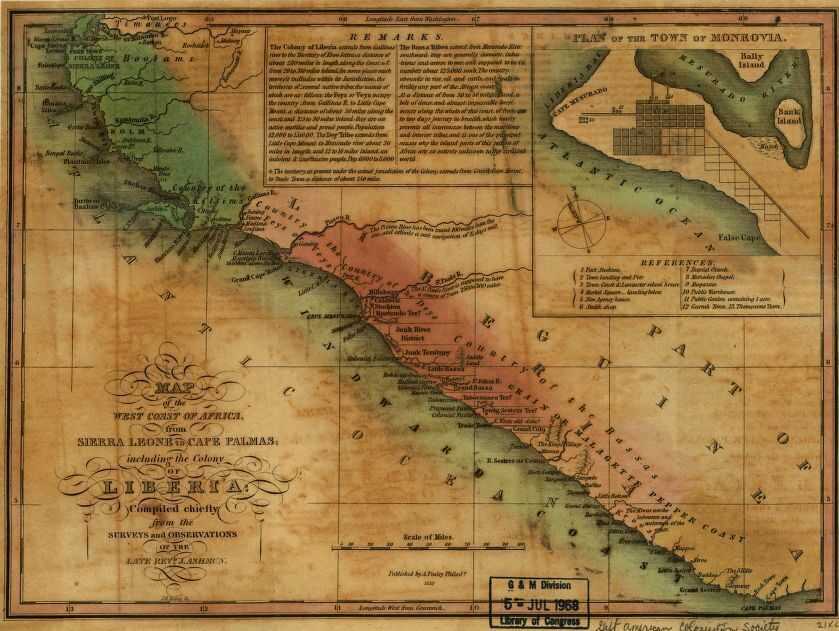Chapter 4
Free Communities of Color
After the Revolution, the free Black population grew exponentially. Whether by manumission, escape, military service, or birth, Black people found paths to freedom. In 1790 there were almost 60,000 free African Americans in the United States. By 1860, the population had grown to almost 500,000. Yet Black freedom was limited, and regulated. Free African Americans risked being kidnapped. They were required to carry badges or cards that identified them as free or face enslavement.
Facing racism, violence, and economic hardship, free Black people turned inward. They forged autonomous, tight-knit communities and neighborhoods—foundations for freedom.
Across the nation, free Black people created an infrastructure that helped them to survive. At the center was the Church, which guided all aspects of community life. It was an incubator for important institutions that strengthened and enriched the community. Free Black leaders organized fraternal orders, antislavery societies, and national conventions to uplift all Black people. Educational institutions like the Free African School and literary societies promoted intellect and pride. The Black press, including the first African American newspaper, Freedom’s Journal, was a vehicle to publicly challenge slavery and injustice. Black entrepreneurs, like the Toussaints of New York, provided philanthropic support.
Free African Americans responded to discrimination in different ways. From the impassioned cry of Henry Highland Garnet for “resistance” and the radical voice of David Walker, who encouraged violent resistance—to the global vision of John Russwurm, who supported emigration to west Africa—free African Americans built institutions and traditions that still stand today. They pushed the definition of freedom and forced the nation to face its contradictions.
Perspectives on Place
As both free and enslaved African Americans debated where to manifest freedom, it was clear that Black people were not monolithic. Differing perspectives on the power of place and unencumbered freedom pushed the national and international dialogue on the meaning of freedom. Moreover the public debates demonstrated African American self-awareness, self-determination, and self-empowerment.
Self-reliance is the fine road to independence.
Mary Ann Shadd Cary, ca. 1853
Mary Ann Shadd Cary
Mary Ann Shadd Cary
Mary Ann Shadd Cary (1823–1893) was an African American abolitionist and journalist. She moved to Canada and founded the Provincial Freeman, a newspaper read widely by the fugitive slave community. Ultimately disillusioned by the racism she faced in Canada, by 1861 she moved back to the United States to support the Union’s war efforts.
We have carefully examined the different plans . . . and none, we believe, can reach half so efficiently the masses as the plan on colonization on the West Coast of Africa.
John Russwurm, 1829
John Brown Russwurm
John Brown Russwurm
John Russwurm (1799–1851), the son of a Virginia merchant and a woman of African descent, co-founded Freedom’s Journal, the nation’s first Black newspaper. Russwurm was eventually fired for his support of emigration to Africa. He moved to Liberia and by 1836 became the first Black governor of a Liberian district.
We are NATIVES of this country. . . . Not a few of our fathers suffered and bled to purchase its independence. . . . We ask only to share equal privileges.
Rev. Peter Williams, 1830
Reverend Peter Williams
Reverend Peter Williams
Peter Williams (1786–1840) attended the African Free School in New York and helped found St. Philip’s Church of New York. He was the second ordained African American priest of the Episcopal Church. Williams supported emigration to Haiti, but challenged the views of the American Colonization Society.
I believe that every colored man . . . ought to go [to Africa] immediately. . . . We ought to go anywhere where we can better our condition.
Henry Highland Garnet, 1849
Henry Highland Garnet
Henry Highland Garnet
Henry Highland Garnet (1815–1882) was born enslaved in Maryland and escaped to freedom. A radical abolitionist, Garnet called for an uprising of enslaved African Americans against slaveholders. A world traveler, Garnett visited Cuba, lived in Liberia and Jamaica, and supported the emigration movement.
Unconquerable prejudice resulting from their color, they never could amalgamate with the free whites of this country. It was desirable, therefore . . . to drain them off.
Henry Clay, 1816
Henry Clay
Henry Clay as a Young Man
Politician Henry Clay (1777–1852) helped author the Missouri Compromise in 1820 and the Compromise of 1850, which included the Fugitive Slave Act. One of the founding members of the American Colonization Society, Clay believed that free Black people living in a white society could only stir up notions of freedom for all African Americans.
Let us all unite, and . . . declare that we will not leave our own country . . . this is our . . . country; . . . our forefathers have planted trees in America for us and we intend to stay and eat the fruit.
Peter Osborne, 1832
